Pulling Strings to Build Pyramids – IELTS Reading Answers
7 min read
Updated On
-
Copy link
Table of Contents

Limited-Time Offer : Access a FREE 10-Day IELTS Study Plan!
The Academic passage ‘Pulling Strings to Build Pyramids’ is a reading passage that appeared in an IELTS Test. Try to find the answers to get an idea of the difficulty level of the passages in the actual reading test. If you want more passages to solve, try taking one of our IELTS reading practice tests.
The questions found in this passage are:
True/ False/ Not Give
The True/False/Not Given type of questions in the IELTS reading test is similar to the Yes/No/Not Given type of questions. It is one of the trickiest types of questions, which requires the test-taker to locate and identify specific information in the reading text, which will be presented as facts. The test-taker should be able to understand the questions and write the answers accordingly. If the text agrees with or confirms the information in the statement, the answer is True. If the text contradicts or is the opposite to the information in the statement, the answer is False and If there is no information or it is impossible to know, the answer is NOT GIVEN.
Summary Completion
The summary completion question types are very common in the IELTS reading test, which assesses the test-taker’s ability to understand the gist of the paragraphs in the text. There’ll be a summary of information from the reading text with some blank spaces in that summary. The test-taker should fill the blank spaces with the answers taken from the reading passage. The words written in the gaps shouldn’t exceed the number of words mentioned in the instruction.
You should spend 20 minutes answering questions 1-13 based on the reading passage.
Pulling Strings to Build Pyramids
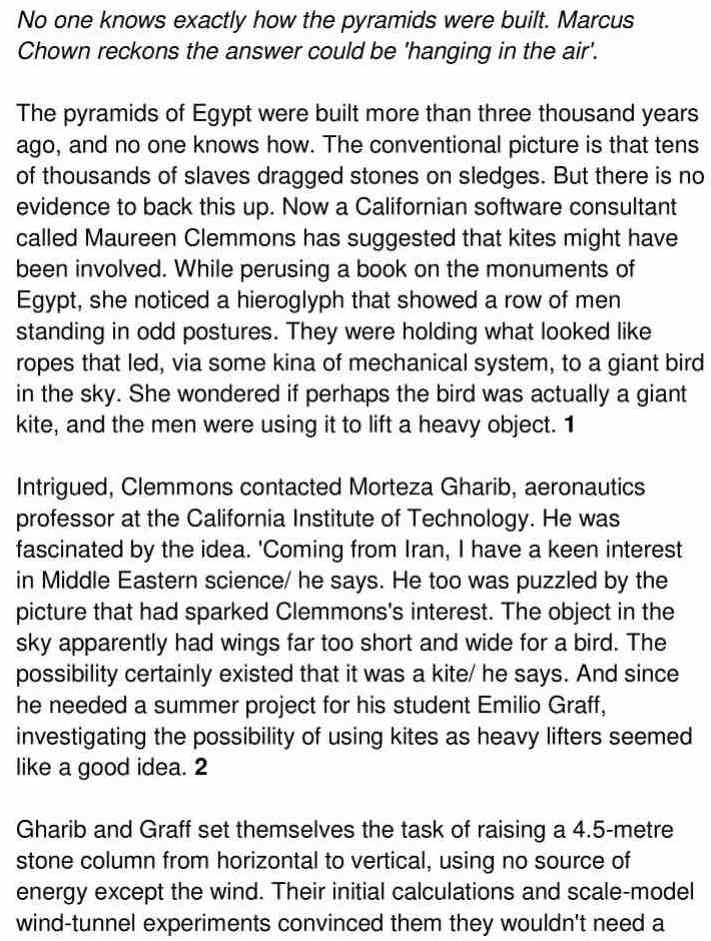
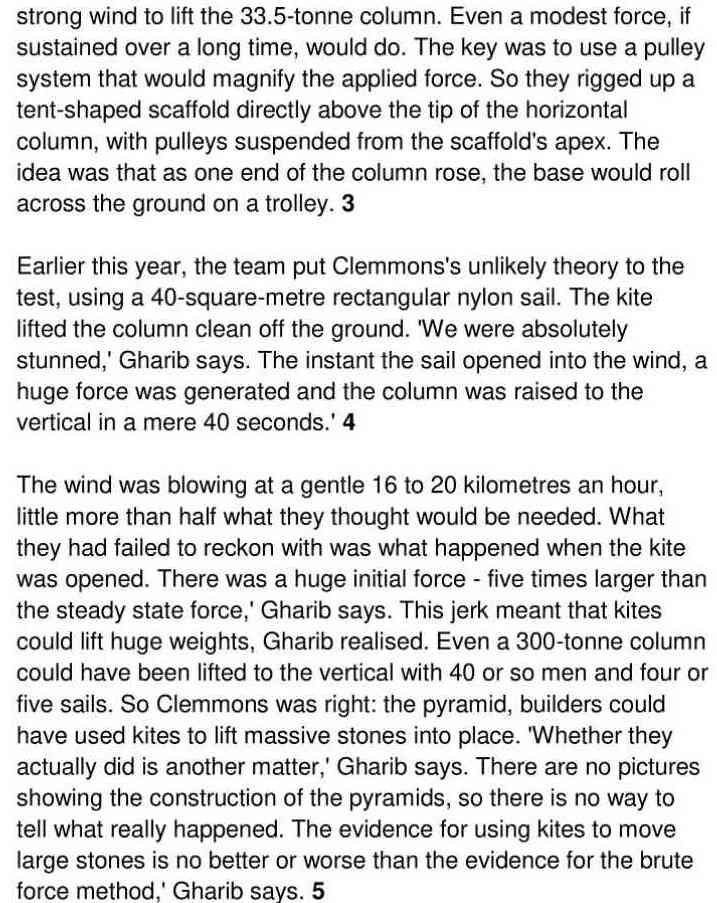
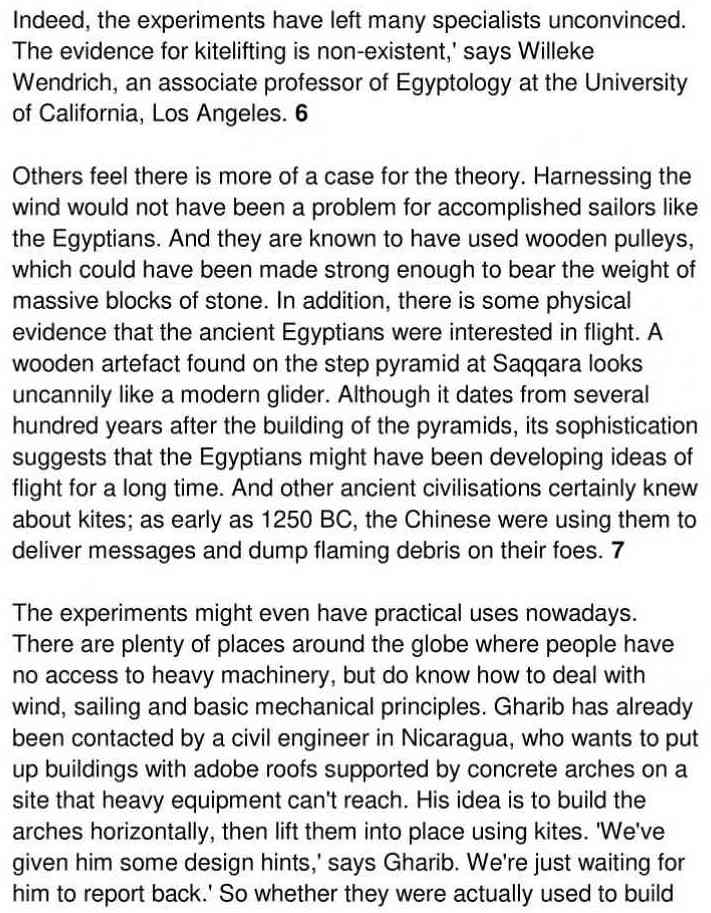

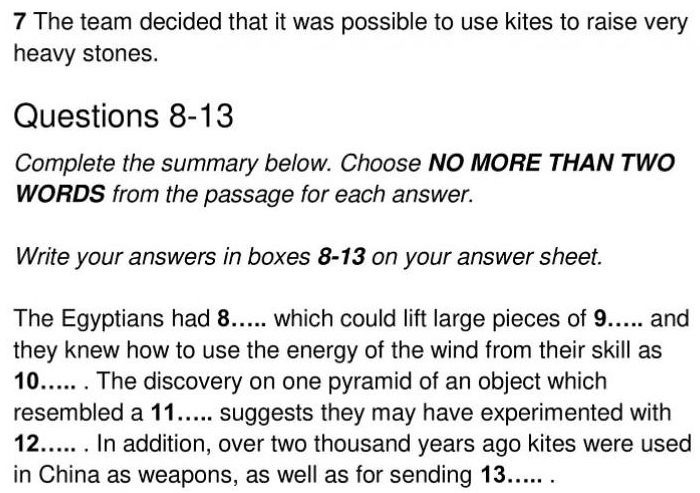
Answers
Unlock Answers
The answers to questions 1-13 are given below along with their explanations.
1 Answer: True
Question type: True/False/Not Given
Answer locations: Paragraph 1
Answer explanations: Paragraph 1 mentions that the ‘conventional picture’ (generally believed) is that ‘tens of thousands of slaves’ (large numbers of people were needed to build) dragged stones on sledges. As the statement agrees with the information, the answer is ‘TRUE’.
2 Answer: False
Question type: True/False/Not Given
Answer locations: Paragraph 1
Answer explanations: Paragraph 1 points out that while perusing a ‘book on the monuments of Egypt’, ‘Maureen Clemmons’, a Californian software consultant, noticed a ‘hieroglyph’ that showed a row of men standing in ‘odd’ (strange) postures. So, it was actually in a book that she found the hieroglyph and not on the monument itself. As the statement contradicts the information, the answer is ‘FALSE’.
3 Answer: Not Given
Question type: True/False/Not Given
Answer locations: Paragraph 2
Answer explanations: In paragraph 2, it is given that Clemmons contacted Morteza Gharib, aeronautics professor at the California Institute of Technology, who was fascinated by the idea that the bird in the hieroglyph was actually a giant kite, and the men were using it to lift a heavy object. There is no further mention of Gharib being part of any experiments on bird flight in the past. So, the answer is ‘NOT GIVEN’.
4 Answer: True
Question type: True/False/Not Given
Answer locations: Paragraph 2, last line
Answer explanations: The last sentence of the second paragraph notes that Gharib needed a summer project for his student Emilio Graff, ‘investigating the possibility of using kites as heavy lifters’ (theory) seemed like a good idea. The author adds in paragraph 3 that Gharib and Graff ‘set themselves the task of raising a 4.5-metre stone column’ from horizontal to vertical, ‘using no source of energy except the wind’. So, before applying the theory that kites, or wind power, can be used as heavy lifters, they decided to test it through the experiment. As the statement agrees with the information, the answer is ‘TRUE’.
5 Answer: False
Question type: True/False/Not Given
Answer locations: Paragraph 5
Answer explanations: Paragraph 5 states that the ‘wind was blowing at a gentle 16 to 20 kilometres an hour’ (not high speed), little more than half what they thought would be needed. What they had failed to reckon with was what happened when the kite was opened. There was a huge initial force – five times larger than the steady state force. This ‘jerk meant that kites could lift huge weights’, Gharib realised. So, it was the sudden force or jerk that made the experiment successful and not the high speed of the wind. As the statement contradicts the information, the answer is ‘FALSE’.
6 Answer: Not Given
Question type: True/False/Not Given
Answer locations: Paragraph 5
Answer explanations: From the first two sentences of paragraph 5 we get to know that the wind was blowing at a gentle 16 to 20 kilometres an hour, little more than half what they thought would be needed. They did not even take into account what would happen when the kite was opened. In the remaining paragraph or in the passage, there is no mention of how high the kite went or if it affected the force of the wind. Hence, the answer is ‘NOT GIVEN’.
7 Answer: True
Question type: True/False/Not Given
Answer locations: Paragraph 5
Answer explanations: Paragraph 5 relates the experiment undertaken by Gharib and Graff and it was proved that ‘Clemmons was right’: the pyramid, ‘builders could have used kites to lift massive stones into place’ (possible to use kites to raise very heavy stones). As the statement agrees with the information, the answer is ‘TRUE’.
8 Answer: Wooden pulleys
Question type: Summary completion
Answer locations: Paragraph 7
Answer explanations: Paragraph 7 informs that harnessing wind would not have been a problem for accomplished sailors like the ‘Egyptians’. And ‘they are known to have used wooden pulleys’, which could have been made strong enough to ‘bear the weight of massive blocks’ (lift large pieces) of stone. Hence, the answer is ‘wooden pulleys’.
9 Answer: stone
Question type: Summary completion
Answer locations: Paragraph 7
Answer explanations: Paragraph 7 brings out the fact that harnessing the wind would not have been a problem for accomplished sailors like the ‘Egyptians’ who are known to have used wooden pulleys, which could have been made strong enough to ‘bear’ (lift) the weight of ‘massive blocks of stone’ (large pieces of stone). Hence, the answer is ‘stone’.
10 Answer: Accomplished sailors
Question type: Summary completion
Answer locations: Paragraph 7
Answer explanations: Paragraph 7 refers to the fact that ‘harnessing the wind’ (how to use the energy of the wind) would not have been a problem for ‘accomplished sailors like the Egyptians’. Hence, the answer is ‘accomplished sailors’.
11 Answer: Modern glider
Question type: Summary completion
Answer locations: Paragraph 7
Answer explanations: Paragraph 7 discusses that a wooden artefact found on the step pyramid at Saqqara ‘looks uncannily’ (resembled) like ‘a modern glider’. Hence, the answer is ‘modern glider’.
Answer: Flight
Question type: Summary completion
12 Answer locations: Paragraph 7
Answer explanations: Paragraph 7 suggests that the wooden artefact found on the step pyramid at Saqqara looks uncannily like a modern glider. Its sophistication suggests that the Egyptians ‘might have been developing ideas’ (may have experimented) ‘of flight’ for a long time. Hence, the answer is ‘flight’.
13 Answer: Messages
Question type: Summary completion
Answer locations: Paragraph 7
Answer explanations: In paragraph 7, the author says that ‘as early as 1250 BC’ (over two thousand years ago), the ‘Chinese’ were using them to ‘deliver messages’ (sending messages) and dump ‘flaming debris’ (weapon) on their foes. Hence, the answer is ‘messages’.
Check More IELTS Reading Answers
Also check :
Practice IELTS Reading based on question types

Start Preparing for IELTS: Get Your 10-Day Study Plan Today!
Recent Articles

Nehasri Ravishenbagam

Haniya Yashfeen

Haniya Yashfeen

Haniya Yashfeen
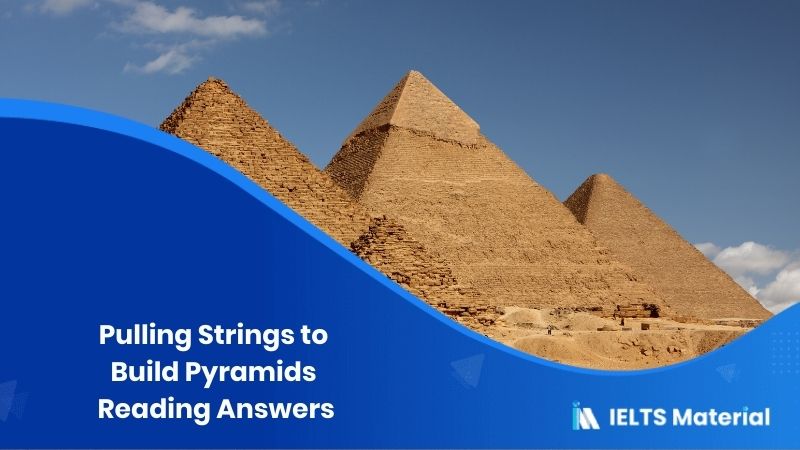



Post your Comments